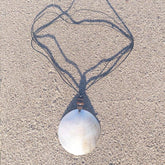NOT Black Friday
The environmental impact of Black Friday...
As you can imagine, the soaring level of consumption on Black Friday and Cyber Monday inevitably leads to a huge amount of waste. From clothing to gadgets, shoppers across the world rush to purchase millions of discounted products that they may not really want. Once the ‘Black Friday buzz’ has worn off, these (mostly non-recyclable) items are more often than not discarded and end up in landfill.

The attractive Black Friday discounts can be hard to resist, which leads to impulsive buying and people buying things they don’t really need. This results in excessive waste and unnecessary CO2 emissions, not good for our planet.
In 2015, first ideas of Green Friday formed as a counter movement to Black Friday. Instead of “shop ‘til you drop”, supporters of Green Friday encourage people to shop more mindfully and sustainably.
It is as simple as taking a moment to think about whether you want and actually need this item.
While the Green Friday movement encourages people to shop more sustainably, they also motivate people to spend more time with their loved ones and to get out into the great outdoors.

Some of the US states have even renamed it Fresh Air Friday – get outside into the woods, a park, the mountains or a lake. Anywhere but shops!
In case you’d like to take things one step further, how about plogging? Plogging is a Swedish invention, meaning “jogging while picking up trash”. What a great idea! Feel free to go plogging without the actual jogging part, if you like. Mother Nature will love you for that.
I have the immense privilege of living in an Area of Outstanding Natural Beauty (AONB) with the beautiful Wye Downs on my doorstep. I recently learnt that one square foot of chalk grassland here contains more biodiversity than the equivalent area of the Amazon rainforest! I have this on good authority from Catherine Bradley, Kent Downs AONB Project Manager.
At RainbowLife this 'NOT Black Friday' we are Butterfly Friday as Green Friday is our everyday. Did you know that butterflies are indicators of the health of our environment? As you know RainbowLife is all about creating a healing rainbow for the planet and her people. So, this Butterfly Friday we are focusing on what's happening with the butterflies and donating 10% of our sales to Kent Wildlife Trust.
Take a look at their amazing rewilding projects here.
Looks like we may have to do a Bison Friday next!
So what makes butterflies good indicators of the health of our environment?
According to the UK Butterfly Monitoring Scheme(UKBMS)...
'Butterflies have short life cycles and thus react quickly to environmental changes. Their limited dispersal ability, larval foodplant specialisation and close-reliance on the weather and climate make many butterfly species sensitive to fine-scale changes.
Recent research has shown that butterflies have declined more rapidly than birds and plants emphasising their potential role as indicators. Butterflies occur in all of the main terrestrial habitat types in the UK and so have the potential to act as indicators for a wide range of species and habitats. Unlike most other groups of insects, butterflies are well-documented, their taxonomy is understood, they are easy to recognise and we have a wealth of information on their ecology and life-histories.'
RainbowLife's Biodiversity & Ecology Advisor (BEA), Jason Adams, recently gave us this useful tip, which I sent out in our November newsletter:
'Stinging nettles are vital to some of our most well-known butterflies, including the struggling Small Tortoiseshell so allowing a patch to grow in a sunny corner of your garden can make a big difference. Nettles don’t need to be trimmed in the autumn as they will die back over the winter and there may still be some caterpillar activity. Also, Red Admiral chrysalises may still be found at the top of the nettle, within a feeding shelter made by the caterpillar.'
If you are interested in butterflies and climate change I recommend Barbara Kingsolver's novel 'Flight Behaviour' which contains some well researched information about butterfly behaviour in response to climate change.

What will you be doing this 'Butterfly Friday'?
If you would like to hear some regular Positive Eco News & Green Tips please join our community & receive our monthly newsletter.












1 comment
Very informative
Leave a comment
All blog comments are checked prior to publishing